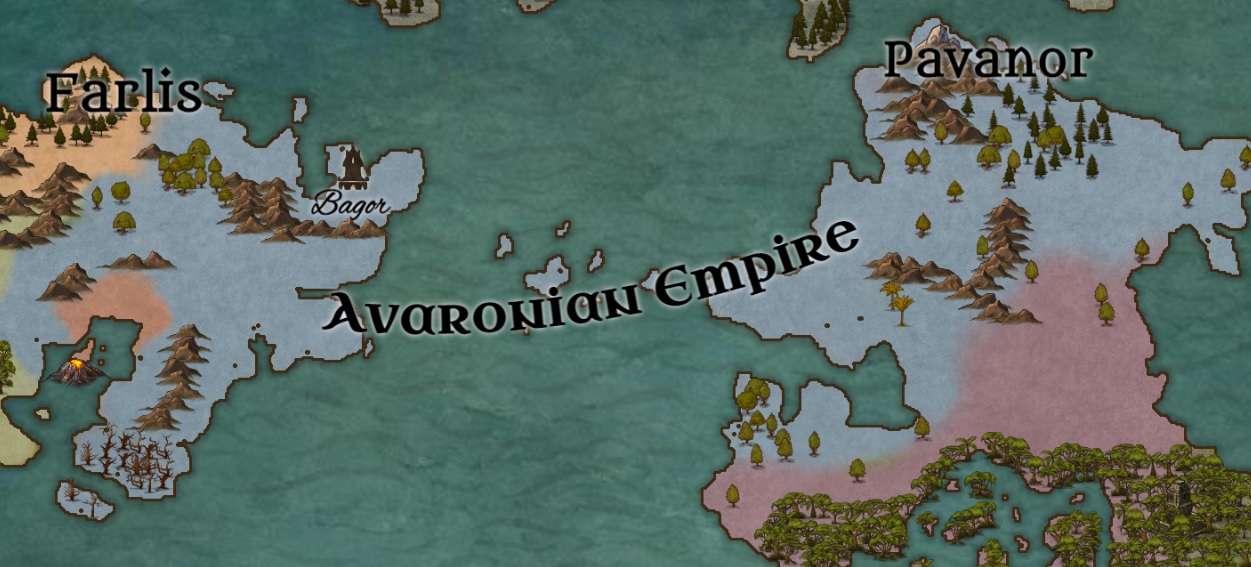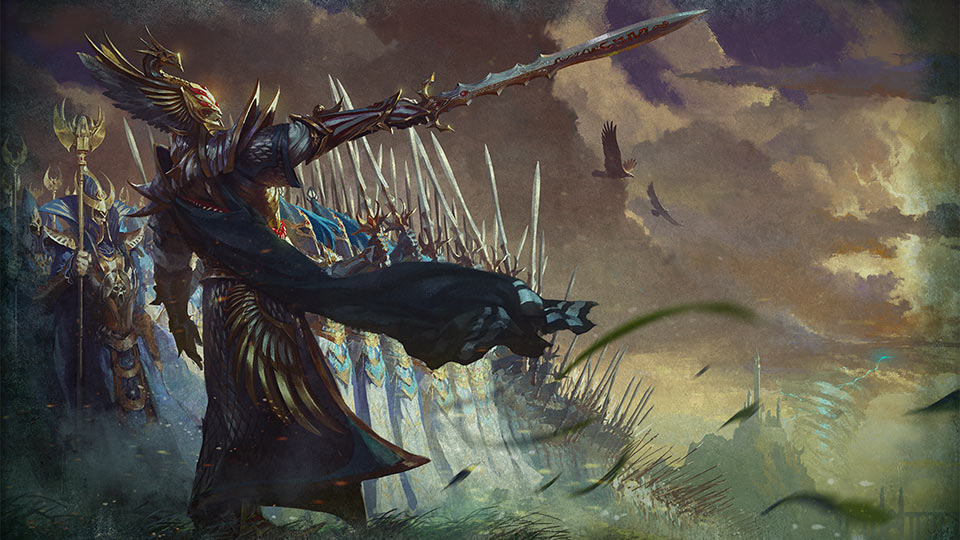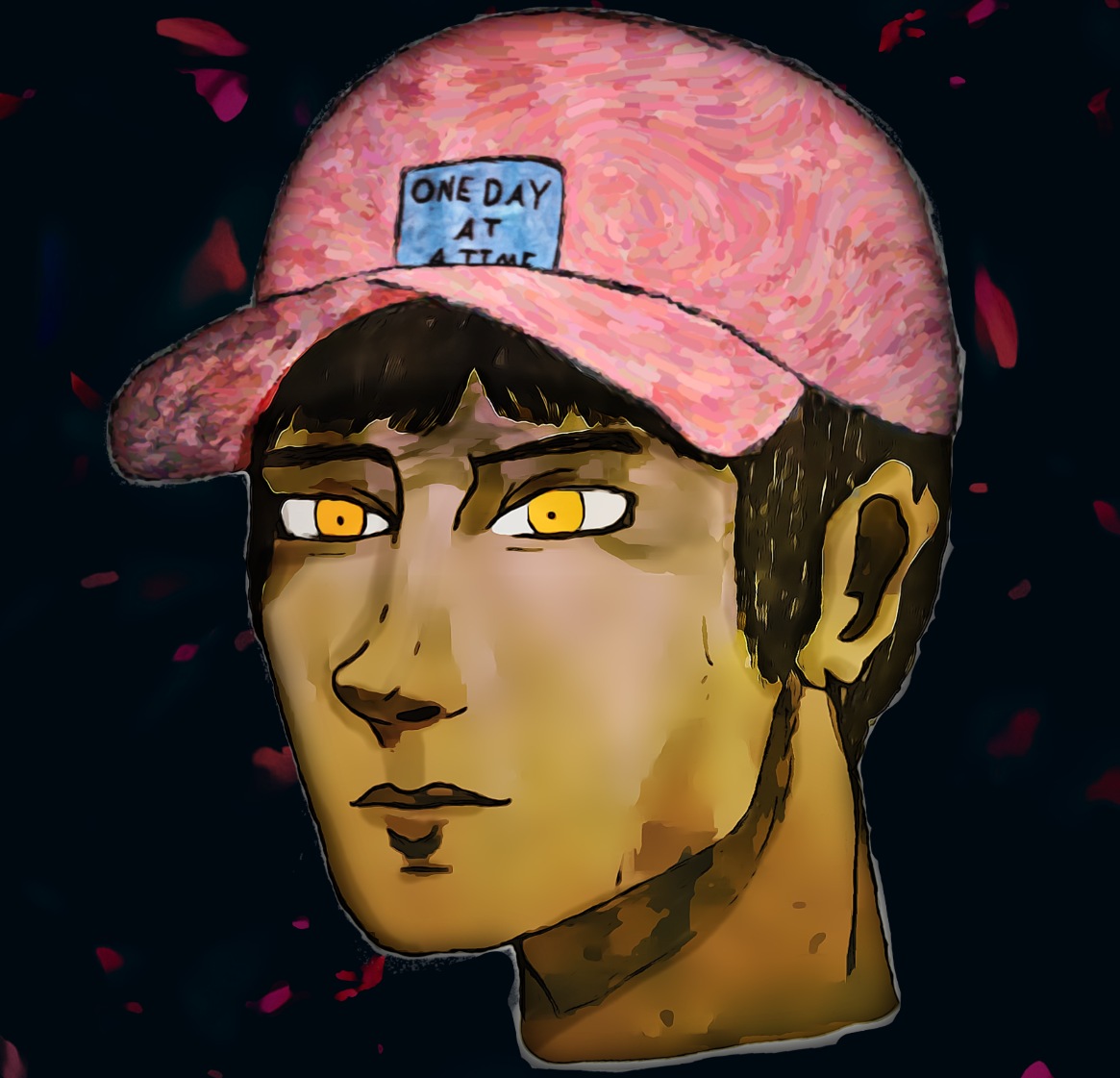Avaronian is an ancient language dating back to the start of the Avaronian empire. Many of the modern languages are derived from it and its influence can often be seen in modern words and syntax. Both Farlian and Median are closely related since Avaronian was last spoken in the areas of these modern languages.
The name Avaronian itself is derived from the words 'Avar' which means Elf and 'Onnon' which means three. This name is likely a reference to the three journeys that the Avaronian Elves took before settling in their main region.
History
Origin
Sometime before the Old Empire came to be, the Avaronian language arose in the region that is currently known as Carthen. According to linguists the Avaronian language possibly shared a common ancestor with the Dwarven languages. What this language was supposed to look like is unknown but similarities between Avaronian and ancient Dwarven texts are easy to find.
Avaronian remained a rather localised language until the Avaronian Elves started their conquests. Mythology tells us that most of this early successful expansion was thanks to the Elven hero Mackevor. If this was all due to one person is yet to be determined but historians agree that Mackevor did indeed live during that period of time.
Expansion
The expansion of the Avaronian empire eventually caused the language to spread across middle and eastern Farlis. These regions were mainly populated by Humans, Gnomes and Halflings who were assimilated into the Empire during the centuries that followed.
The west of the continent remained fairly untouched by the language. This part of the continent was mainly populated by different Elven societies whose languages had deviated from a common ancestor several centuries earlier. The Dragon and Dragonborn realm in the center of the Volker Desert was left untouched as well. They were not true allies of the Avaronians but agreed to a non-aggression pact.
Eventually the Empire continued it's expansion when it first conquered the Elervir Isles and later the western coast of Pavanor. Historians think this is largely due to the fact that those regions were much easier to conquer than the other Elven nations to the west. The Humans and Orcs living there eventually adopted Avaronian as well. Mostly because they were given little choice in the matter.
Decline
When a wave of independence hit Pavanor the language was not fully dropped, since all prior languages were lost over time, but the people living there did adopt a new script and chose to use their own dialect as official language from then on which would later evolve into Pavan.

Avaronian Empire Map by Kefkejaco
Avaronian remained the most important language in Farlis for several more centuries even though ever more diverting dialects started popping up. This came to a halt during the siege of the capital Bagor when a magical cataclysm known as the Chaos Storm made most central regions of the Empire uninhabitable. With the end of the empire the successor states in central Farlis chose to use their own dialect which eventually evolved into Farlian Elvish.
Today Avaronian is considered a dead language but it is still learned by many Elves and Humans, especially those intrested in history or the arcane. Creatures and plants often have an Avaronian name as well which is sometimes the preferred name in scientific circles.
Relations
Close relation
- Median: easy to learn, uses Pavan script
- Farlian (Elvish): easy to learn, uses Avaronian script
Relatively related
- Varenan: advanced difficulty, uses Pavan script
- Pavan: advanced difficulty, uses Pavan script
- Mofis (Elvish): medium difficulty, uses Avaronian script
No close relation
- Arek: high difficulty, uses Pavan script
- Saver (Elvish): advanced difficulty, uses Saver script
- Arendian (Dwarfish): high difficulty, uses Arendian script
Grammar
Plural
In Avaronian the plural depends on how to word ends.
- in(-in): the plural becomes ini (-ini)
- ar (-ar): the plural becomes ana (-ana)
- a (-a): the plural becomes ya (-ya)
- ia(-ia): the plural becomes yi (-yi)
- on (-on): the plural becomes yo(-yo)
- ye (-ye): the plural becomes enye (-enye)
Verbs
In Avaronian verbs always tend typically end in two ways.
- eru(-eru): oweru (Otheru) (to trade)
- ori (-ori): efinori (Efinori) (to farm)
This form is the present/ future form of the verb and can be used regardless of the subject. Both forms have different conjugations depending on the tense.
Sentence Structure
The sentence structure in Avaronian is used in almost any derived modern language. Typically the sentence starts with the verb followed by the subject. The object of the sentence can be found after the subject followed by any additional information.
Verb + Subject + Object + Additional Information
Alphabet
Avaronian script uses some letters not used in the Pavan script.
- y : combination letter used to make vowels long, is otherwise silent (represented as y in western alphabet)
- x : pronounced " θi " (represented as ti in western alphabet)
- ä :pronounced " tɕi ", when used in front of other consonant it doubles that consonant, it is silent in this case (represented as tci in western alphabet)
- ö : pronounced " dʒ " (represented as dj in western alphabet)
In Avaronian the vowels are : a, i , u ,e ,o
Vowels can be made long by placing the letter
y in front of it:
- ya (ɑ:)
- yo (o)
- yu (y:)
- ye (e:)
- yi (iː)
When a consonant needs to be doubled the letter
ä is always used first.
Phonetics
Vowels:
ɑ ɑ: ɛ e e: i iː ɔ o u u: y y: ai oi ɛi i̥
Consonants:
c k x j ɣ g ɟ p f v b t θ h d ð l ʎ m n ŋ r s z ɸ ɕ tɕ θi dʒ









Awesome and very complete article! I love what you did with the flash challenge!